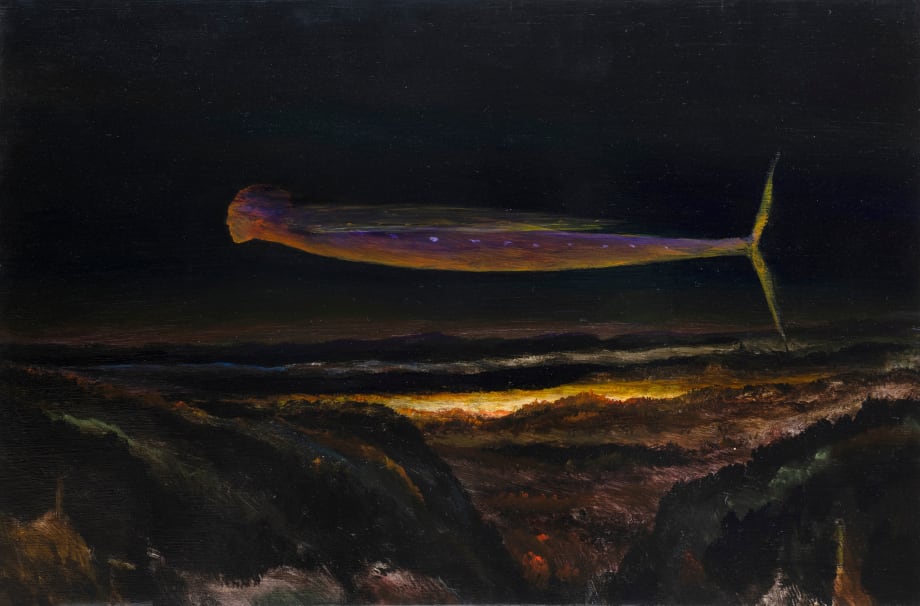It’s one of those beautifully crisp winter mornings on the South Coast of Te Whanganui-a-Tara when we visit John Walsh (b.1954, Te Aitanga-a-Hauiti / New Zealand Irish) at his home studio. Nestled among native trees, Tui sing and play in the branches above. Walsh is barefoot, smiling as we walk up the steps, the cat laid out in the warmth of the sun streaming through the open doors. Inside the studio, we pore over paintings for his upcoming exhibition, marvelling at the shifts in palette and perspective, each ushering in a new tide of emotions and ideas.
Growing up in Uawa Tolaga Bay on the East Coast of the North Island — and having spent years as a surfer and commercial fisherman — Walsh is constantly drawn back to te moana, with its ever-changing colours and creatures all under the guardianship of ngā atua. More recently, the call of the ocean came again, and this time Walsh joined a crew of fourteen aboard the Tahitian waka Fa’afaite for a ten-day voyage from the Bay of Islands to the Marlborough Sounds and finishing in Picton with the rest of the flotilla, an experience now lodged deeply within the artist’s memory. The flotilla was part of the 2019 TUIA 250 commemorations held up and down the motu to mark 250 years since the first encounters between Māori and Pākehā, celebrating Aotearoa’s voyaging heritage, and encouraging open kōrero to better navigating our past, present, and future.
Walsh is renowned for his painting practice that melds histories of migration and colonisation with Mātauranga Māori and contemporary narratives, carrying the viewer along on a mesmerising current of self-reflection and discovery. A number of these new works depict waka, emblematic of the many and various journeys made by people to this island nation in the middle of the Pacific Ocean. In one work, our view tumbles down through the trees toward the water’s edge where several waka have been pulled ashore; in another, a double-hulled waka is depicted in the middle of a blue-green expanse, glimpsed from above through parting clouds; and a large unstretched canvas features a waka occupied by a curious cast of humans, birds, and manaia, something of a callback to an older painting Black Legged Navigator (2014).
In other paintings, Marakihau linger in deep water or drift along on currents. A red headed figure set against a loosely rendered, gold-flecked landscape puts us in mind of patupaiarehe or tūrehu — supernatural, fairy-like beings said to inhabit forests and mountains. Other obscure groups and individuals move across fertile landscapes, their origins and destinations unknown. In several backgrounds, wispy brushstrokes suggest miniature renderings of communities or settlements, smoke curling from unseen fires — the eye and imagination filling in the gaps.
While these new works are imbued with a sense of hope, they are also grounded in the many unconscionable heartbreaks of our current time. Walsh is no stranger to bringing together art and politics, often wrestling with complex and sometimes uncomfortable ideas through his practice. Recently, several text-based works have criticised the destruction of our natural environment at the hands of the free market: chiefly the devastation of Uawa Tolaga Bay, due to the impact of intensive monoculture pine plantations (Walsh refuses to use the term forestry to describe this practice). One work stands out as a particularly evocative image of our time: The Migrants depicts three figures silhouetted against a fiery background, stumbling across an expanse of scorched earth away from an unseen enemy beneath the weight of burning skies — a clear and present commentary on the current plight of displaced people fleeing conflict torn regions across the globe.

